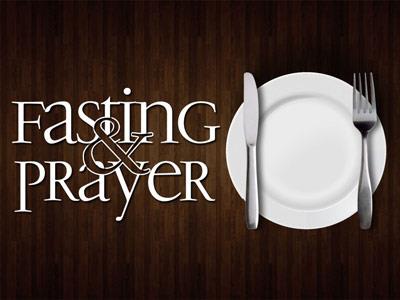-
Fig Tree Series
Contributed by Rev. Dr. Andrew B Natarajan on Apr 17, 2025 (message contributor)
Summary: The Fig tree is a symbol of prosperity, peace and divine blessings. Fig tree is the symbol of Israel in the Bible. Sitting under one’s one fig tree means having prosperity, peace and divine blessings. The Fig tree has the ability to produce fruit multiple times in a year.
Theme: Fig Tree
Text: Mark 11:20-26
Greetings: The Lord is good and his love endures forever.
Introduction: The Four notable events of this chapter are the Triumphal entry of Jesus into Jerusalem City (11:1-11), Cursing the Fig Tree and Cleansing of the temple (11:12-19), the withering of the fig tree and power of prayer (11:20-26), and the question on the Authority of Jesus (27-33).
There are series of discourses on the second coming and the judgment of God by Jesus before his crucifixion. Jesus, the Messiah of Peace, reached Gentiles, reformed the temple usage, and blasted the Jewish pride and power are pictured through cursing and withering of a fig tree (Whedon).
The narratives exhibit that Jesus day after day went to and from of Jerusalem: in the evening he went to Bethany or some part of the Mount of Olives, and there abode all night, and returned in the daytime to Jerusalem, and taught in the temple; for it does not appear that he stayed only one night in Jerusalem, before the night of the Passover (John Gill).
Through these events, I would like to share with you three spiritual lessons:
Jesus comes to us early in the morning
Jesus expects from us the fruitful life
Jesus teaches us to pray with faith
1. Jesus comes to us Early in the Morning (Mark 11:12, 20)
In the morning – implies the daybreak, around 5 am. It is the time for the breakfast of a Jew (Ellicott). Early refers to the last or fourth watch of the day.
Mark narrates two-morning walks, Monday and Tuesday, of Jesus from Bethany to Jerusalem (Schaff Popular). Monday he was hungry and cursed, which was witnessed and remembered by Peter on Tuesday morning.
Mark narrates that Jesus was hungry. It was a clear description of the humanity of Christ. Jesus was hungry after 40 days of fasting (Luke 4:2, Matthew 4:2).
This verse clears the doubt that Jesus could have stayed in the home of Lazarus, Martha, and Mary. If he could have stayed, he would have had breakfast before departing to the city. The inference could be, He might have remained all night in prayer at some remote recess in the vicinity of Bethany as it was his custom. It could have happened and nestled into a tiny depression on the slopes of the Mount of Olives (Coffman).
The curse of the fig tree had happened on a Monday morning, before going to Jerusalem and before the cleansing of the temple. But the effect was beheld by Peter and others on Tuesday, and a lesson was given to them about prayer with faith when Jesus was visiting Jerusalem for the third time (Mark 11:12-13, 19, 20-21) (Pulpit).
2. Jesus expects from us the fruitful life (Mark 11:13-14, 21)
Parable of a Fig Tree: (Matthew 24: 32-33).
The Hebrew word for fig tree is te’enah the equivalent Greek word is Suke’. The Fig tree is a symbol of prosperity, peace and divine blessings. Fig tree is the symbol of Israel in the Bible. Sitting under one’s one fig tree means having prosperity, peace and divine blessings (Micah 4:4, Isaiah 36:16). The Fig tree has the ability to produce fruit multiple times in a year.
Bible refers to three crops of figs in a year: ‘early, first ripe, first fruit before the summer are very good figs’ (referring to Israel - Isaiah 28.4; Jeremiah24.2, 3; Hosea 9.10) – a relatively small crop with the best flavour (June-July). ‘Sweetness and good fruit, the season for figs’ (Judges 9:11, Mark 11:13) – main crop (August-September). Made into cakes for winter use (1 Samuel 25:18). ‘Green, bad, inedible figs’(Song 2:13; Jeremiah 24:2, 3, 29:17) – green or winter figs, small, unripe, unsweetened, inedible fruit. The significant point here is that the Bible associates these qualities with the people of Israel (ref:factsaboutisrael.uk/israel-fig-tree).
Found nothing except leaves: Jesus was hungry, and so he went to the fig tree looking for fruits to satisfy his hunger. But the fig tree had many leaves but not even a single fruit. It is a representation of the life of the Jewish nation. “If the fig tree with its fair promise of leaves and its barrenness of fruit was the Jewish nation, its withering under his malediction(curse) was the perdition of the Jewish state and system” (Whedon).
This suggests that Jesus is depicted as not only feeling for food but also as being hungry to discover righteousness in Israel. He wants to find figs (Peter Pett). The sin of hypocrites, unfruitful professors, vain followers normally seek alive but are dead in deeds. They would not bring forth the fruits of righteousness and justice (Benson).
Christ looks for the power of religion in those who profess it, and the savor of it from those that have the show of it. His just expectations from flourishing professors are often disappointed; he comes to many, seeking fruit, and finds leaves only. (Matthew Henry).

 Sermon Central
Sermon Central



